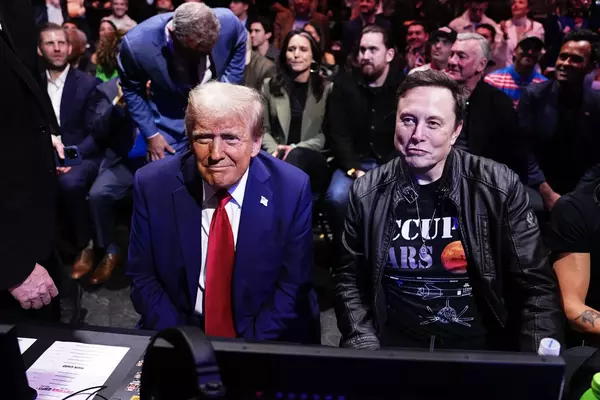
A letter sent recently to the White House and Congress by nearly 50 progressive groups urges the United States to abandon what it describes as an antagonistic approach to China that threatens critical cooperation to address climate change. But the fear that U.S. competition with China dooms necessary climate action is misplaced. Competition may, in fact, spur climate action—the groups’ proposal would leave the United States with no realistic means to address the worst of China’s human rights abuses and potential security threats.
The letter calls the United States’ competitive approach to China “an antagonistic posture that risks undermining much-needed climate cooperation” and calls instead for the United States to prioritize “multilateralism, diplomacy, and cooperation with China to address the existential threat that is the climate crisis.”
There is no question the stakes are dire. Climate change-fueled disasters like the record-breaking heat waves last month in North America and Siberia—alongside persistent drought and devastating wildfires—will only become more common and more severe, even with drastic reductions in carbon emissions.
However, the letter undermines its own advocacy by framing the problem as the United States’ “Cold War mentality” against China. This, consciously or not, parrots a long-standing Chinese talking point that is unlikely to make the White House more receptive to its argument. And although there is certainly no reason for the United States to be gratuitously combative with China, it is fantastical to assert the problem is chiefly on the U.S. side when China’s acrimonious “wolf warrior” diplomats and state media openly and regularly ridicule the United States and threaten allies and key trade and security partners like Japan, Australia, and Europe.
The letter does not directly address Chinese human rights abuses like the repression of its Uyghur population in Xinjiang, political crackdowns in Hong Kong, or its long-standing threats to Taiwan’s self-governance. It is concerned the United States’ competitive approach does nothing for “the wellbeing of everyday people” in China, and representatives of the letter’s sponsor insist climate cooperation doesn’t absolve either state from human rights abuses. But whether its signatories recognize it or not, the letter’s practical implication is this concern does not extend to the well-being of those repressed or threatened populations as it leaves no coercive tools for the United States to influence China’s domestic or international behavior.
One issue that seems to be near the top of signatories’ concerns about U.S. policy toward China is ensuring the supply of critical materials for renewable energy production. Much of the global supply of polysilicon, a necessary component in photovoltaic solar panels, is produced in Xinjiang. Cheap Chinese solar materials have been key to reducing the cost of renewable solar energy, to the point it is now often cheaper to build new solar capacity than continue operating existing coal and other fossil-fueled power plants. But concern over the use of Uyghur forced labor in Xinjiang’s polysilicon industry recently led U.S. President Joe Biden to ban the import of material from several top Chinese suppliers. Although this may create problems for the U.S. solar industry over the near term, the sanctions are one of the few levers the United States has to either influence China’s policies in Xinjiang or motivate polysilicon supply chains to diversify, which could ultimately benefit global solar deployment.
The letter insists there are no “nationalistic solutions” to climate change and both addressing it and making the global economy more just and sustainable requires a “shift from competition to cooperation.” Since the United States and China currently account for around 38 percent of global greenhouse gas emissions, it is intuitive the two countries must cooperate to reduce them. For its part, the Biden administration has neither foreclosed climate cooperation with China nor made it contingent on halting human rights abuses. Senior U.S. officials, including Secretary of State Antony Blinken, National Security Advisor Jake Sullivan, and even Biden himself, have consistently said the United States will cooperate with China on areas of mutual interest like climate change when it makes sense to do so.
But when looking at specific policies, it’s not clear how much meaningful cooperation between the world’s two top emitters is actually necessary to decarbonize their economies. Some appropriate nationalist motivations may even be the most likely driver of meaningful climate solutions and action in both China and the United States. These do not have to be nationalistic or populist. Competition for economic benefit and global leadership and influence can push both countries to find decarbonization solutions, promote sustainable development, and extend international green financing more effectively than coordination or cooperation might. In any case, given the absence of comity between the two powers and the diminishing prospect of building any over what climate experts call a “critical decade” for climate action, there are not many realistic alternatives.
A misconception shared by both climate advocates and some China hawks is the idea that China’s adherence to its climate goals is somehow purchased with concessions from the United States—the former seeing it as a precondition for climate cooperation and the latter as a reason to avoid cooperation at all. Even if the United States helped usher in the 2014 joint climate agreement with China that in turn enabled the Paris Agreement to be reached in 2015, China has never made environmental commitments either as a favor to the United States or in return for one.
China faces significant water scarcity and food security issues, both made worse by the mounting effects of climate change. Although Chinese leaders feel extraordinary pressure to maintain economic growth rates—often using unproductive infrastructure investments that produce needless additional carbon emissions simply for the sake of achieving a benchmark—they know China’s continued prosperity, the Chinese Communist Party’s legitimacy, and China’s global standing depend on meaningful climate action. Chinese President Xi Jinping has staked his personal reputation and legacy on making China a climate leader and realizing an “ecological civilization.”
Toward that end—and against many skeptics’ expectations—China is making strides toward meeting its goals of peaking its carbon emissions before 2030 and achieving carbon neutrality by 2060. China’s national carbon trading market will open this month after a delay. China empowered its most powerful economic planning agency to lead industry decarbonization, and strong targets are already emerging for especially carbon-intensive sectors like cement and steel as well as policy reforms that incentivized overproduction. Chinese banks, long (and justly) criticized for financing dirty coal plants overseas, are starting to cancel polluting projects, and some are beginning to make plans to exit the coal sector altogether.
If China is going to escape the “middle-income trap” and other social and structural pressures that threaten to stall its already slowing economic growth, it must address the country’s enormous income inequality, unproductive and emissions-encouraging debt model, and unsustainable development practices. That is, China must build an economy, as the letter puts it, “that works for everyday working people.” It remains to be seen whether it can, since even if Chinese leaders recognize these problems, they have been slow or loathe to make many decisive reforms. But China does not need U.S. encouragement or cooperation to do so.
Reconciling China’s repressive abuses at home and its potential threat to places like Taiwan with its critical role in the global response to climate change may be the thorniest foreign-policy challenge the United States and its partners face in the medium term, but ignoring the former to service the latter provides solutions to neither.







